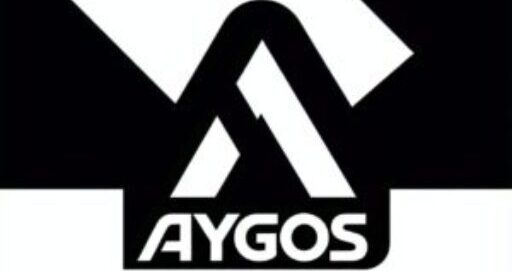Starting a handmade business is an exciting journey, but once you gain traction, the next challenge is scaling it for long-term growth. Scaling means increasing production, expanding marketing efforts, and streamlining operations to generate higher revenue without overworking yourself.
In this guide, we’ll cover proven strategies to help you scale your handmade business effectively and sustainably.
1. Set Clear Growth Goals
Before expanding, define what scaling means for you.
1.1 Establish Business Growth Objectives
- Increase monthly revenue by 30% in six months.
- Expand to a new marketplace (Amazon Handmade, Faire, etc.).
- Improve production efficiency to handle higher order volumes.
1.2 Use the SMART Goal Framework
✔ Specific: “Launch wholesale partnerships with 5 boutiques in the next 6 months.”
✔ Measurable: “Increase website traffic by 50% through SEO and paid ads.”
✔ Achievable: “Outsource packaging and shipping to save 10 hours per week.”
✔ Relevant: “Offer subscription boxes to create recurring revenue.”
✔ Time-Bound: “Grow Instagram followers from 5K to 10K in 4 months.”
Tip: Track your progress monthly and adjust strategies as needed.
2. Streamline and Scale Production
Handling more orders means optimizing your production process.
2.1 Batch Production for Efficiency
- Create products in large batches instead of one at a time.
- Standardize materials and processes to reduce production time.
2.2 Upgrade Equipment and Tools
- Invest in better tools or machinery to improve speed and quality.
- If handcrafting, train an assistant to help with repetitive tasks.
2.3 Use Inventory Management Systems
- Track materials and stock using Craftybase, Zoho Inventory, or Shopify’s inventory tools.
- Ensure raw materials are always stocked to avoid production delays.
Example:
A handmade candle business could pre-mix and pour wax for 50 candles at once instead of making them one by one.
3. Expand to Multiple Sales Channels
Selling on multiple platforms increases visibility and revenue.
3.1 Best Marketplaces for Handmade Businesses
- Etsy – Best for handmade and personalized products.
- Amazon Handmade – Higher volume potential.
- Faire – Ideal for wholesale to boutiques and gift shops.
- Your Own Website (Shopify, WooCommerce, Wix) – More branding control and higher profit margins.
3.2 Sell on Social Media Shops
- Use Instagram and Facebook Shops to allow customers to purchase directly.
- Add a “Shop Now” button to your social media profiles.
Example:
A handmade jewelry seller could list on Etsy, Shopify, and Faire to reach individual and wholesale buyers.
4. Increase Marketing Efforts
Scaling requires stronger marketing strategies to attract and retain customers.
4.1 Run Paid Ads
- Facebook & Instagram Ads: Target customers interested in handmade and unique gifts.
- Pinterest Ads: Perfect for craft businesses with visually appealing products.
- Google Shopping Ads: Increase search visibility for customers looking for specific products.
4.2 Improve SEO for Organic Sales
- Use long-tail keywords in product descriptions (e.g., “handmade soy candle for relaxation”).
- Optimize product listings with detailed descriptions and high-quality images.
4.3 Leverage Influencer & Affiliate Marketing
- Partner with craft influencers on Instagram, YouTube, and TikTok.
- Offer affiliate commissions for influencers who drive sales.
Example:
A handmade skincare brand could partner with beauty bloggers to feature products in skincare routines.
5. Offer Wholesale and Bulk Orders
Selling wholesale helps scale without needing thousands of individual orders.
5.1 How to Get Wholesale Clients
- Apply to Faire to connect with retailers.
- Reach out to local boutiques and gift shops.
- Create a wholesale catalog with bulk pricing.
5.2 Set Up Wholesale Pricing
Retail Price=(Materials+Labor+Overhead)×2\text{Retail Price} = (\text{Materials} + \text{Labor} + \text{Overhead}) \times 2Retail Price=(Materials+Labor+Overhead)×2 Wholesale Price=Retail Price×0.5\text{Wholesale Price} = \text{Retail Price} \times 0.5Wholesale Price=Retail Price×0.5
Example:
A handmade ceramics business could sell handmade mugs to cafés at bulk prices.
6. Offer Subscription Boxes and Bundles
Recurring revenue helps stabilize cash flow.
6.1 Start a Subscription Box
- Offer monthly or quarterly themed craft boxes.
- Include exclusive or seasonal items only for subscribers.
6.2 Create Gift Bundles
- Offer matching product sets (e.g., handmade candles + bath salts).
- Promote bundles during holidays and special occasions.
Example:
A handmade soap business could offer a “Self-Care Monthly Box” with bath products.
7. Optimize Order Fulfillment and Shipping
Efficient shipping ensures faster delivery and happier customers.
7.1 Use a Third-Party Fulfillment Center
- Services like ShipBob, Printful, or Amazon FBA can handle packing and shipping.
7.2 Automate Label Printing
- Use ShipStation or Pirate Ship to print bulk shipping labels.
7.3 Offer Multiple Shipping Options
- Standard, Express, and International Shipping for more customer flexibility.
Example:
A handmade stationery brand could use ShipStation to manage and track bulk shipments.
8. Improve Customer Experience and Retention
Keeping customers engaged increases repeat purchases.
8.1 Build a Loyalty Program
- Offer points for every purchase, social media share, or referral.
- Allow customers to redeem points for discounts or free gifts.
8.2 Send Personalized Emails
- Offer exclusive discounts for returning customers.
- Send birthday and holiday promotions.
8.3 Provide Excellent Customer Service
- Respond to inquiries within 24 hours.
- Handle returns and complaints professionally.
Example:
A handmade planner business could send discount codes to repeat customers as a thank-you.
9. Hire Help and Outsource Tasks
Scaling means you can’t do everything alone.
9.1 What to Outsource
- Virtual Assistant – Emails, admin, and customer support.
- Social Media Manager – Posting and engagement.
- Production Assistants – If demand increases.
9.2 Where to Find Help
- Fiverr & Upwork – Freelancers for marketing and design.
- Local Assistants – Hire part-time help for crafting and fulfillment.
Example:
A handmade clothing brand could outsource sewing for high-demand items while focusing on design.
10. Track Performance and Adjust Strategies
To grow effectively, analyze what’s working.
10.1 Track Key Business Metrics
- Best-Selling Products – Focus marketing on top items.
- Customer Acquisition Cost (CAC) – Optimize ad spending.
- Conversion Rate – Improve website usability if low.
10.2 Adjust Based on Data
- If social media ads convert well, increase the budget.
- If certain items sell out quickly, stock up ahead of time.
Example:
If Pinterest marketing drives the most sales, invest more in Pinterest Ads and SEO.
Conclusion: Scale Your Handmade Business Sustainably
Scaling requires smart planning, automation, and strategic growth. By optimizing production, expanding to new sales channels, and improving marketing, you can increase revenue while maintaining quality and efficiency.
Start implementing these scaling strategies today, and watch your handmade business thrive! 🚀✨

